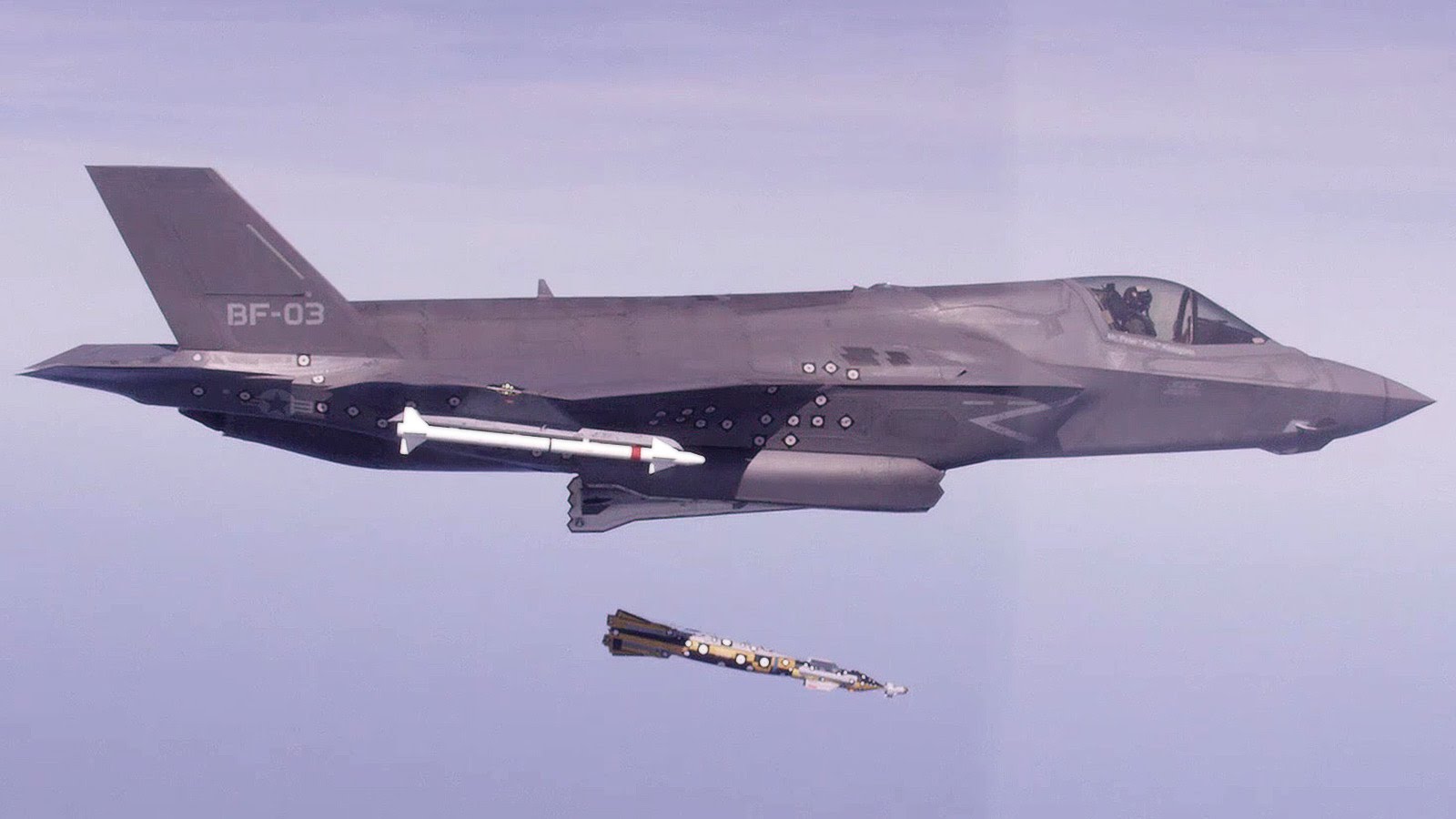The F-35 Lightning II program made aviation history June 12 as Royal Air Force (RAF) Test Pilot Squadron Leader Andy Edgell released two inert 500-pound dual mode Paveway IV precision-guided bombs from aircraft BF-03 over the Atlantic Test Ranges.
The inaugural weapons separation test of the Paveway IV conducted by the F-35 Lightning II Patuxent River Integrated Test Force (ITF) was a major milestone for the U.K. Royal Navy and RAF F-35 program. The test brought together the multi-role Short Takeoff and Vertical Landing (STOVL) variant of the F-35 fifth generation stealth fighter and the Paveway IV — an advanced weapon that equips the Royal Navy and RAF with a state-of-the-art, all-weather Inertial Navigation- and GPS-guided bombing capability, the first dual mode bomb operational on the F-35 Lightning II.
The inert bombs safely separated from an internal weapons bay within the F-35B, thereby maintaining the stealth characteristics of the aircraft and furthering the collaborative approach of the U.S. and U.K. in the development of the F-35 Lightning II.
An F-35B carried out the first weapons separation test of the UK’s Paveway IV precision-guided bomb on June 12, dropping two inert Paveway IVs as part of a series of UK weapons separation trials this year. (Lockheed Martin video)
The U.K. is the only Level 1 partner with the U.S. on the joint, multinational acquisition to develop and field an affordable, highly common family of next generation strike fighter aircraft for the U.S. Air Force, Navy, Marine Corps, and eight international partners. Its major role in the F-35’s System Design and Demonstration phase is enabling the regeneration of the U.K. Carrier Strike capability, which will result in significant contracts and jobs for U.K. industry as the F-35B Lightning II and Typhoon become the U.K.’s Fast Jet Combat Air Elements of the future. The primary role of the F-35B STOVL aircraft is ground attack with a secondary air-to-air role. The aircraft is powered by a single main engine with a vertically-mounted, shaft-driven lift fan propulsion system.
The F-35 Lightning II Pax River ITF joint team, assigned to the Air Test and Evaluation Squadron (VX) 23 aboard Naval Air Station Patuxent River in Maryland, released two Paveway IV bombs during the flight. Working on the multi-phase testing of the F-35 Block 3F, U.K.-unique Paveway IV are U.S. government, military and contractor personnel, U.K. Ministry of Defence representatives, and U.K. industry partners from BAE Systems, QinetiQ and Raytheon Systems Ltd.
The F-35 Lightning II is a single-seat, single-engine, stealthy strike fighter that incorporates low-observable (stealth) technologies, defensive avionics, advanced sensor fusion, internal and external weapons, and an advanced prognostic maintenance capability to deliver optimum international security via integrated coalition operations.
Partner nations include the U.K., Italy, the Netherlands, Turkey, Canada, Australia, Denmark and Norway — as well as three Foreign Military Sales (FMS) countries — Japan, Israel and South Korea.
The F-35A conventional takeoff and landing (CTOL) variant will be a multi-role, stealthy strike aircraft replacement for the Air Force’s F-16 Falcon and the A-10 Thunderbolt II aircraft, complementing the F-22A Raptor.
The F-35B STOVL variant will be a multi-role stealthy strike aircraft to replace the Marine Corps’ F/A-18C/D Hornet and AV-8B Harrier aircraft. The carrier-suitable variant (CV), the F-35C, will provide the Department of Navy a multi-role, stealthy strike aircraft to complement the F/A-18 E/F Super Hornet.
The Paveway IV is a Raytheon U.K. product, Lockheed Martin is the aircraft contractor and Pratt & Whitney is the engine contractor.









